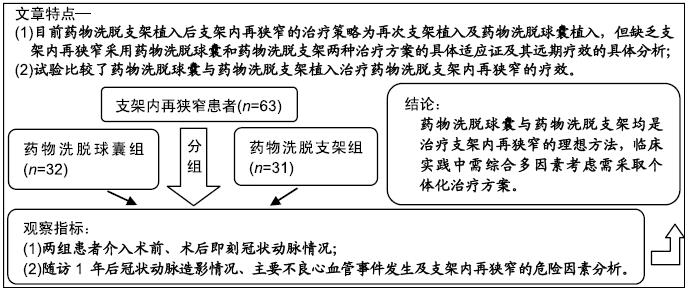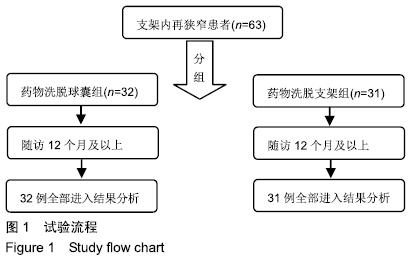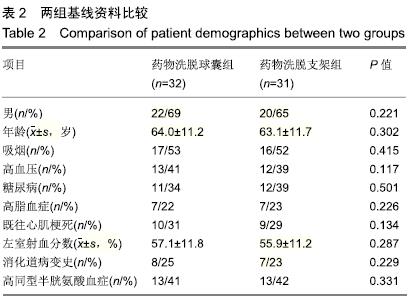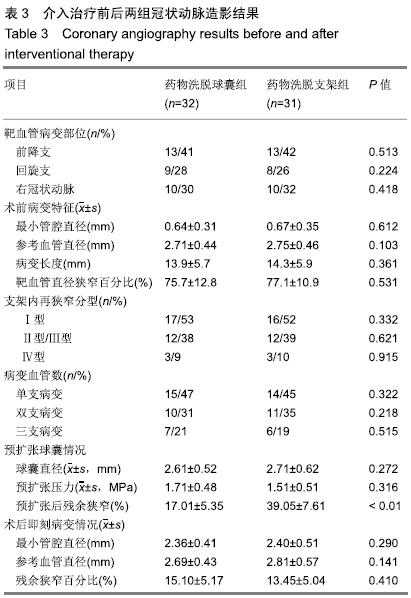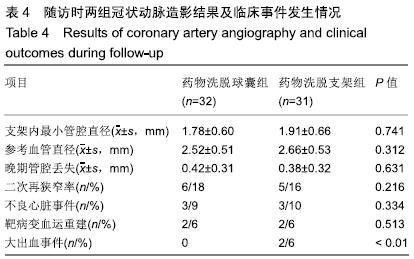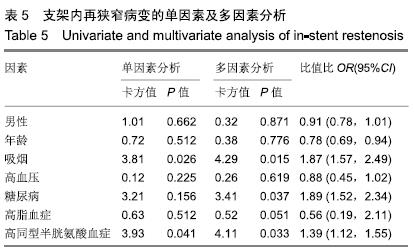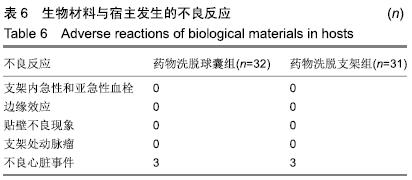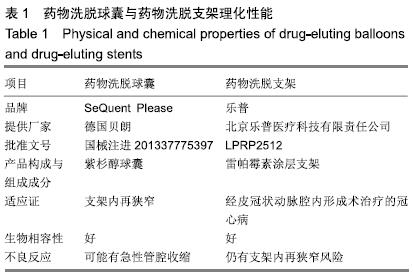[1] AKIN I, NIENABER CA.Treatment of coronary in-stent restenosis—evidence for universal recommendation? J Thorac Dis.2015;7(10):1672-1675.
[2] SIONTIS GC, STEFANINI GG, MAVRIDIS D, et al. Percutaneous coronary interventional strategies for treatment of in-stent restenosis: a network meta-analysis.Lancet. 2015; 386(9994):655-664.
[3] RITTGER H, WALISZEWSKI M, BRACHMANN J, et al. Long-Term Outcomes After Treatment With a Paclitaxel- Coated Balloon Versus Balloon Angioplasty: Insights From the PEPCAD-DES Study (Treatment of Drug-eluting Stent [DES] In-Stent Restenosis With SeQuent Please Paclitaxel- Coated Percutaneous Transluminal Coronary Angioplasty [PTCA] Catheter). JACC Cardiovasc Interv.2015;8(13): 1695-1700.
[4] UNVERDORBEN M, VALLBRACHT C, CREMERS B, et al. Paclitaxel-coated balloon catheter versus paclitaxel-coated stent for the treatment of coronary in-stent restenosis: the three-year results of the PEPCAD II ISR study. EuroIntervention.2015;11(8):926-934.
[5] ALFONSO F, PÉREZ-VIZCAYNO MJ, CÁRDENAS A, et al. A Prospective Randomized Trial of Drug-Eluting Balloons Versus Everolimus-Eluting Stents in Patients With In-Stent Restenosis of Drug-Eluting Stents: The RIBS IV Randomized Clinical Trial.J Am Coll Cardiol.2015;66(1):23-33.
[6] INDERMUEHLE A, BAHL R, LANSKY AJ, et al.Drug-eluting balloon angioplasty for in-stent restenosis: a systematic review and meta-analysis of randomised controlled trials. Heart.2013;99(5):327-333.
[7] KLEBER FX ,RITTGER H, BONAVENTURA K, et al. Drug-coated balloons for treatment of coronary artery disease: updated recommendations from a consensus group. Clin Res Cardiol.2013;102(11):785-797.
[8] JAMSHIDI P, NYFFENEGGER T, SABTI Z, et al.A novel approach to treat in-stent restenosis: 6- and 12-month results using the everolimuseluting bioresorbable vascular scaffold. EuroIntervention.2016;11(13):1479-1486.
[9] BNAA KH, MANNSVERK J, WISETH R, et al.Drug-Eluting or Bare-MetalStents for Coronary Artery Disease.N Engl J Med. 2016;375(13):1242-1252.
[10] LEE JM, PARK J, KANG J, et al.Comparison among drug-eluting balloon,drug-eluting stent, and plain balloon angioplasty for the treatment of in-stent restenosis: a network meta-analysis of 11 randomized, controlled trials.JACC Cardiovasc Interv.2015;8(3):382-394.
[11] 田宏伟,乔树宾.药物涂层球囊的研究进展[J].中国循环杂志, 2017,32(11):1134-1136.
[12] WAKSMAN R, PAKALA R.Drug-eluting balloon: the comeback kid? Circ Cardiovasc Interv. 2009;2(4):352-358.
[13] SCHELLER B, HEHRLEIN C, BOCKSCH W, et al.Treatment of coronary instent restenosis with a paclitaxel-coated balloon catheter.N Engl J Med.2006;355(20):2113-2124.
[14] 中国成人血脂异常防治指南修订联合委员会.中国成人血脂异常防治指南(2016修订版) [J].中华心血管病杂志, 2016,44(10): 833-853.
[15] 中国高血压防治指南修订委员会,高血压联盟(中国),中华医学会心血管病学分会,等.中国高血压防治指南(2018年修订版)[J].中国心血管杂志,2019,24(1):24-56.
[16] IAKOVOU I, SCHMIDT T, GE L, et al. Angiographic patterns of restenosis after paclitaxel-eluting stent implantation.J Am Coll Cardiol.2005;45(5):805-806.
[17] CAI JZ, ZHU YX, WANG XY, et al.Comparison of new-generation drug-eluting stents versus drug-coated balloon for in-stent restenosis: a meta-analysis of randomised controlled trials. BMJ Open.2018;8(2):e017231.
[18] BASAVARAJAIAH S, NAQANUMA T, LATIB A, et al. Treatment of drugeluting stent restenosis: Comparison between drug-eluting balloon versus second-generation drug-eluting stents from a retrospectiveobservational study.Catheter Cardiovasc Interv.2016;88(4):522-528.
[19] BYRNE RA, NEUMANN FJ, MEHILLI J, et al. Paclitaxel-eluting balloons,paclitaxel-eluting stents, and balloon angioplasty in patients with restenosis after implantation of a drug-eluting stent (ISARDESIRE 4):a randomised,open-label trial.Lancet.2013;381(9865):461-467.
[20] HABARA S, KADOTA K, SHIMADA T, et al.Late Restenosis After Paclitaxel-Coated Balloon Angioplasty Occurs in Patients With Drug-Eluting Stent Restenosis.J Am Coll Cardiol. 2015;66(1):14-22.
[21] CREMERS B, BIEDERMANN M, MAHNKOPF D, et al. Comparison of two different paclitaxel-coated balloon catheters in the porcine coronary restenosis model.Clin Res Cardiol.2009;98(5):325-330.
[22] NAGANUMA T, LATIB A, SGUEGLIA GA, et al.A 2-year follow-up of a randomized multicenter study comparing a paclitaxel drug-eluting balloon with a paclitaxel-eluting stent in small coronary vessels the BELLO study.Int J Cardio. 2015; 184(8):17-21.
[23] LIOU K, JEPSON N, CAO C, et al.Drug-eluting Balloon Versus Second Generation Drug Eluting Stents in the Treatment of In-stent Restenosis: A Systematic Review and Meta-analysis. Heart Lung Circ.2016;25(12):1184-1194.
[24] MAMUTI W, ABLIMIT A, KELIMU W, et al.Comparison of drugeluting balloon versus drug-eluting stent in patients with in-stent restenosis: insight from randomized controlled trials. Int J Cardio.2015;179(1):424-429.
[25] 蔡金赞,陈凯伦,贾海波,等.普通球囊、药物涂层球囊及药物洗脱支架治疗冠状动脉支架内再狭窄的长期疗效Meta分析[J].中国循环杂志,2018,33(9):837-878.
[26] KUBO S, KADOTA K, OTSURU S, et al.Optimal treatment of recurrent restenosis lesions after drug-eluting stent implantation for in-stent restenosis lesions.EuroIntervention 2013;9(7):788-796
[27] NAVARESE EP, AUSTIN D, GURBEL PA, et al. Drug-coated balloons in treatment of in-stent restenosis:a meta-analysis of randomised controlled trials.Clin Res Cardiol.2013;102(4): 279-287.
[28] WANG Y, LOU X, XU X, et al. Drug-eluting balloons versus drugeluting stents for the management of in-stent restenosis: a metaanalysis of randomized and observational studies. J Cardiol.2017;70(5):446-453.
[29] 张文广,裴汉军,吴永健,等.药物洗脱支架治疗糖尿病合并冠状动脉支架内再狭窄远期疗效及安全性观察[J].中国循环杂志, 2013, 28(2):96-99.
[30] KUFNER S, CASSESE S, VALESKINI M, et al. Long-Term Eficacy and Safety of Paclitaxel-Eluting Balloon for the Treatment of Drug-Eluting Stent Restenosis: 3-Year Results of a Randomized Controlled Trial. JACC Cardiovasc Interv. 2015;8(7):877-884.
|
